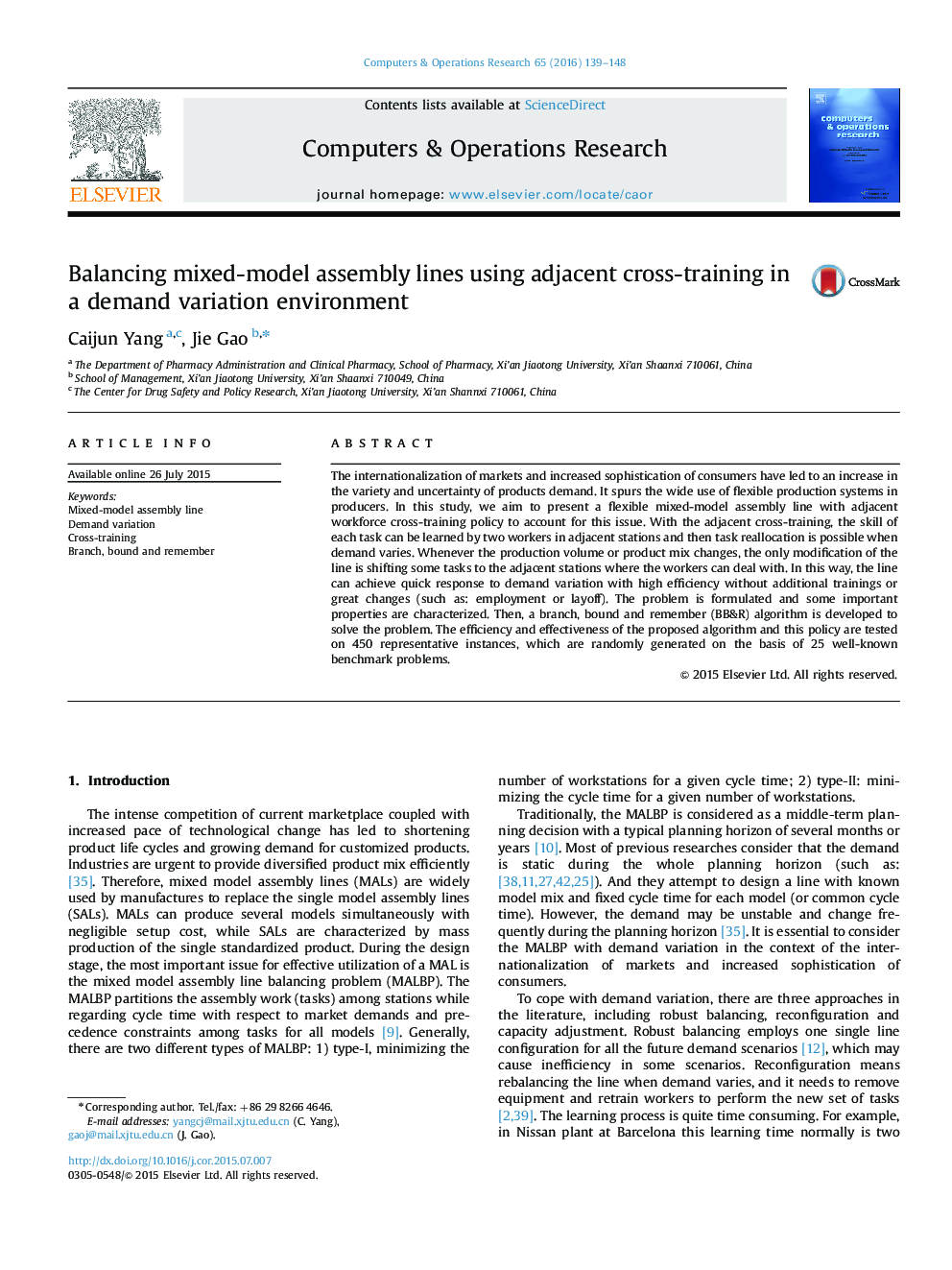| Article ID | Journal | Published Year | Pages | File Type |
|---|---|---|---|---|
| 475044 | Computers & Operations Research | 2016 | 10 Pages |
•This paper presents a contribution related to a straight-paced MAL with adjacent cross-training to meet the variation in production demand.•With adjacent cross-training, tasks can be reallocated to adjacent stations where workers can deal with when demand changes. The assembly line can achieve quick response to the new demand without too many changes.•For all the 450 instances, our algorithm can find the optimal solution for 388 instances in 100 s, and the gaps between the obtained objective values and the lower bounds are 1.62 for the remaining 62 instances on average.•In total, 83 out of the 388 instances use fewer stations with the adjacent cross-training policy than without the policy.
The internationalization of markets and increased sophistication of consumers have led to an increase in the variety and uncertainty of products demand. It spurs the wide use of flexible production systems in producers. In this study, we aim to present a flexible mixed-model assembly line with adjacent workforce cross-training policy to account for this issue. With the adjacent cross-training, the skill of each task can be learned by two workers in adjacent stations and then task reallocation is possible when demand varies. Whenever the production volume or product mix changes, the only modification of the line is shifting some tasks to the adjacent stations where the workers can deal with. In this way, the line can achieve quick response to demand variation with high efficiency without additional trainings or great changes (such as: employment or layoff). The problem is formulated and some important properties are characterized. Then, a branch, bound and remember (BB&R) algorithm is developed to solve the problem. The efficiency and effectiveness of the proposed algorithm and this policy are tested on 450 representative instances, which are randomly generated on the basis of 25 well-known benchmark problems.
